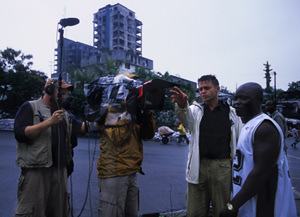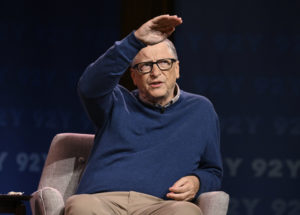Doctors Without Borders, With a Film Crew
Mark Hopkins, the director of the new documentary “Living in Emergency,” about the international humanitarian organization Médecins Sans Frontières -- Doctors Without Borders -- compares the group to the Special Forces. Not many people get accepted to the program, and of those who are, few go on to do a second mission. Mark Hopkins, the director of the new documentary “Living in Emergency,” about the international humanitarian organization Médecins Sans Frontières -- Doctors Without Borders -- compares the group to the Special Forces.
, the director of the new documentary “Living in Emergency,” about the international humanitarian organization Médecins Sans Frontières — Doctors Without Borders — compares the group to the Special Forces. Not many people get accepted to the program, and of those who are, few go on to do a second mission.
“It’s more competitive than Harvard to get into; they want not only the best doctors, but the people who have the mental tenacity to deal with these situations and rise to the occasion,” Hopkins said. “It’s like human experience on crack. The friendships are more profound, the humor is darker, and when they go out and party, they do it with a vengeance. Then they wake up at 6 in the morning and are on adrenaline all day.”
In “Living in Emergency,” Hopkins interweaves stories of four MSF volunteers in Liberia and the Congo. Two of them are new recruits and two are veterans. The camera follows them through crises of faith and confidence to slums, and as they deal with amputations, malnourished children and insufficient resources. Hopkins wanted to show just how intense life is for these doctors — who are often the first ones on the ground in countries still reeling from a natural disaster or an armed conflict — and the psychological journey of people under such intense pressure.
Hopkins thought the organization would be happy to have him document what its volunteers do in these emergency situations. But those in charge of MSF told him they had no interest in having him film their work, and it took him more than six months to convince them.
To change their minds, Hopkins immersed himself in learning about the organization, which has more than 27,000 volunteers in more than 60 countries and which won a Nobel Peace Prize in 1999. In doing so, he became even more impressed by their philosophy.
“One of the things that appealed to me is it’s not a hero story,” he said. “These guys have blood-and-guts evidence in front of them that they’re just scratching the surface. It’s a very honest understanding that the work being done is a drop in the ocean.”
Dr. Julie Brichard, a MSF volunteer who has done missions in the Congo, Haiti, Sudan and Mali, says Hopkins has captured the experience of what it’s like working for MSF. “A lot of people imagine that you save the world,” she said. “The movie shows we don’t save the world.”
Despite the limitations of what doctors can do, Brichard, whose expertise is in malnutrition, says she found satisfaction in the work, particularly with children.
“You can see the child get better in just a few days,” she said. “You say, ‘Wow.’ These children who had a swollen belly now have big smiles.”
The movie shows how the pressure and extremes get to the volunteers. One of the doctors, a 26-year-old on his first mission out in a remote bush clinic, feels stranded and frustrated, and an anesthetist who has spent nine years doing missions, mostly in war zones, decides he’s had enough. Hopkins said people at MSF are OK with the movie showing the limits of the volunteers’ idealism.
“It exposes their rough edges,” he said. “It’s not a fundraising movie. What it is of use for is in the recruitment sphere. It’s a very easy way to weed people out. They can tell them to watch the movie and see if they have the fortitude for it.”
Hopkins, a fifth-generation Kenyan who has lived on and off in Africa, said he wasn’t prepared for the violence, poverty and misery he saw in filming in Liberia and the Congo.
“I’ve been on the periphery of these types of situations,” he said. “I’ve seen bodies on the beach near the Somali border, so I thought I’d be more prepared than I actually was, but there’s really nothing like it.”
The film can be difficult to watch, both because of graphic scenes in the operating room and because of the horrific circumstances that people in these countries are living under. Hopkins chose not to go into the political situations of the countries where he filmed or into the back story of the volunteers, who are definitely not portrayed as saints. They get angry, they get drunk and at times they clash with the local staff. Hopkins wanted to leave questions unanswered, he says, and for “Living in Emergency” to have no obvious message or take-away. This might seem frustrating, but the goal of the documentary, Hopkins says, was to honestly portray some of what the doctors go through in extreme situations — and in that the film succeeds.
“What motivates them is principled action,” he said. “Not in a cliché save-the-world way, but if you see someone drowning, you rush in and try and help them. You don’t think ‘Am I going to be effective?’ or ‘Am I going to get my shoes wet?’ ”
Your support matters…Independent journalism is under threat and overshadowed by heavily funded mainstream media.
You can help level the playing field. Become a member.
Your tax-deductible contribution keeps us digging beneath the headlines to give you thought-provoking, investigative reporting and analysis that unearths what's really happening- without compromise.
Give today to support our courageous, independent journalists.






You need to be a supporter to comment.
There are currently no responses to this article.
Be the first to respond.